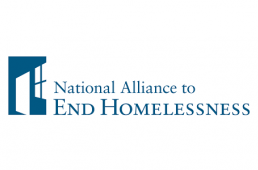
May 24, 2019
Categories: Homelessness
The National Alliance to End Homelessness (NAEH) released their State of Homelessness 2019 report earlier this year. NAEH offers this report to chart progress in ending homelessness and "serve as a reference for policymakers, journalists, advocates, and the public on trends in homelessness, homeless assistance, and at-risk populations at the national and state levels."
Nationwide, there are an estimated 552,830 individuals experiencing homelessness on a given night. This is based on data gathered during the annual Point-in-Time (PIT) count where volunteers come together to count and interview people experiencing homelessness.
This year, the NAEH report includes new data on the following:
In Texas, there are an estimated 25,310 individuals experiencing homelessness. The NAEH report provides the following additional information on this population.
If you're interested in the state of homelessness in specific parts of the state, the Texas Homeless Network (THN) compiles that information each year. You can access it under the 2019 Community Reports by Area here.
THN provides a wealth of other information as well including Annual Homeless Assessment Reports, Housing Inventory Reports and System Performance Measures. This data provides detailed information on the progress communities are making in addressing homelessness in their area.
TSAHC and Efforts to End Homelessness
TSAHC continues to support and participate in the following statewide and local efforts designed to raise awareness around homelessness and help make it brief, rare and non-recurring:
On the House blog posts are meant to provide general information on various housing-related issues, research and programs. We are not liable for any errors or inaccuracies in the information provided by blog sources. Furthermore, this blog is not legal advice and should not be used as a substitute for legal advice from a licensed professional attorney.
TSAHC reviews all blog comments before they are posted to ensure a positive experience for our online community. Off-topic comments; hostile, derogatory or deliberately insulting comments; and comments specifically promoting goods and services will not be posted.
Approved comments will be published in their entirety. Personal information will not be removed unless it pertains to someone other than the person submitting the comment. For more information, please see our Comment Posting Guidelines.
To remove a previously submitted and published comment, please contact Anna Orendain at [email protected].
If you have a question regarding any of TSAHC's programs, please contact us.

Very sad that we still have so many people without shelter